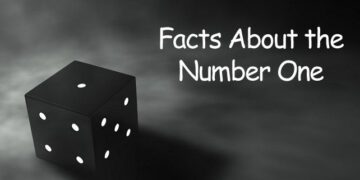Over the ages, people have attributed many facts to numbers.
Numerology, superstition, important dates, and so many other things cling to various numbers, which in some cases gives them great significance!
Today let’s take a look at ten fun facts about the number nine.
A two-dimensional shape with eight sides is called either an enneagon or a nonagon, while a three-dimensional shape with eight faces is called an enneahedron or a nonahedron. While the prefix ennea- is sometimes used in scientific terms to denote the number nine, it’s not commonly used. That being said, a group of any nine things is called an ennead.
There used to be nine planets in the solar system, but this number was reduced to eight in 2006. No, a planet didn’t explode, but Pluto was downgraded from a planet to a dwarf planet.
The chemical element with the atomic number nine is fluorine. Fluorine belongs to the 17th group, the halogens, on the periodic table of elements. In its natural state, it’s a highly toxic gas and is extremely reactive to nearly all other elements. Fluorine is found naturally within the mineral fluorite, which once refined is used to enrich uranium.
Pregnancy in humans typically lasts for nine months, split up into three trimesters of three months. This is, of course, a very rough guideline, as babies can be born from 37 weeks to more than 42. Generally, the closer to the 37-week mark that a baby is born, the more serious health issues it could have, while those born between weeks 39 and 41 are the healthiest.
The words in French, German, and Spanish for the number nine are all connected with their respective words for new. In French, neuf is used for both nine and new. Likewise, Neun means nine in German, while neu means new; in Spanish, nueve means nine while nuevo means new.
Around 750 BC in Ancient Rome, November was the ninth month of the year, while September was the seventh. This seems perfectly logical since nov and sept denote nine and seven, respectively. The whole system was ruined around 700 BC when Julius Caesar came along and added the months of June and July, pushing back the other months by two.
The number nine can be found everywhere within mythologies from all over the world. In Norse mythology, there are nine worlds within the universe, which are all rooted by Yggdrasil, the world tree. In Greek mythology, there are the nine Muses, the goddesses that bless their patrons with various forms of inspiration. Both the Aztec and Maya underworlds, Mictlan and Xibalba, each have nine different levels.
The longest single-word palindrome in the English language is “redivider,” which has nine letters. A palindrome is something such as a word, number, or phrase that reads the same backward as it does forwards.
The most epic poem to come out of Italy has got to be Dante’s The Divine Comedy. In Inferno, the first part of the epic narrative, Dante describes nine different circles (or levels) of hell. The first circle is limbo, which is kind of like hell lite. The second circle is lust and is reserved for those with a penchant for its namesake. As each circle of hell increases in number, the level of punishment received by the circles’ occupants increases. The ninth circle, treachery, doesn’t really need much of an explanation.
In the fictional world that J.R.R. Tolkien set The Lord of the Rings, there are a number of magical artifacts called the Rings Of Power. They were forged by the dark lord Sauron with the intention of gifting them to the elves, tricking them into enslavement. The elves saw through his plan, and nine of the Rings of Power were gifted to human lords instead. The lords who accepted the rings were eventually corrupted by the power Sauron instilled within them, turning them into the fearsome Nazgûl.
The number nine is quite an interesting one, really.
It has linguistic connections to the word new, yet in mythology is sometimes connected to the underworld.
Could this be a coincidence, or is it all tied together by the number of months that we humans are typically pregnant for?
We’ll leave that one up to you to decide!


















